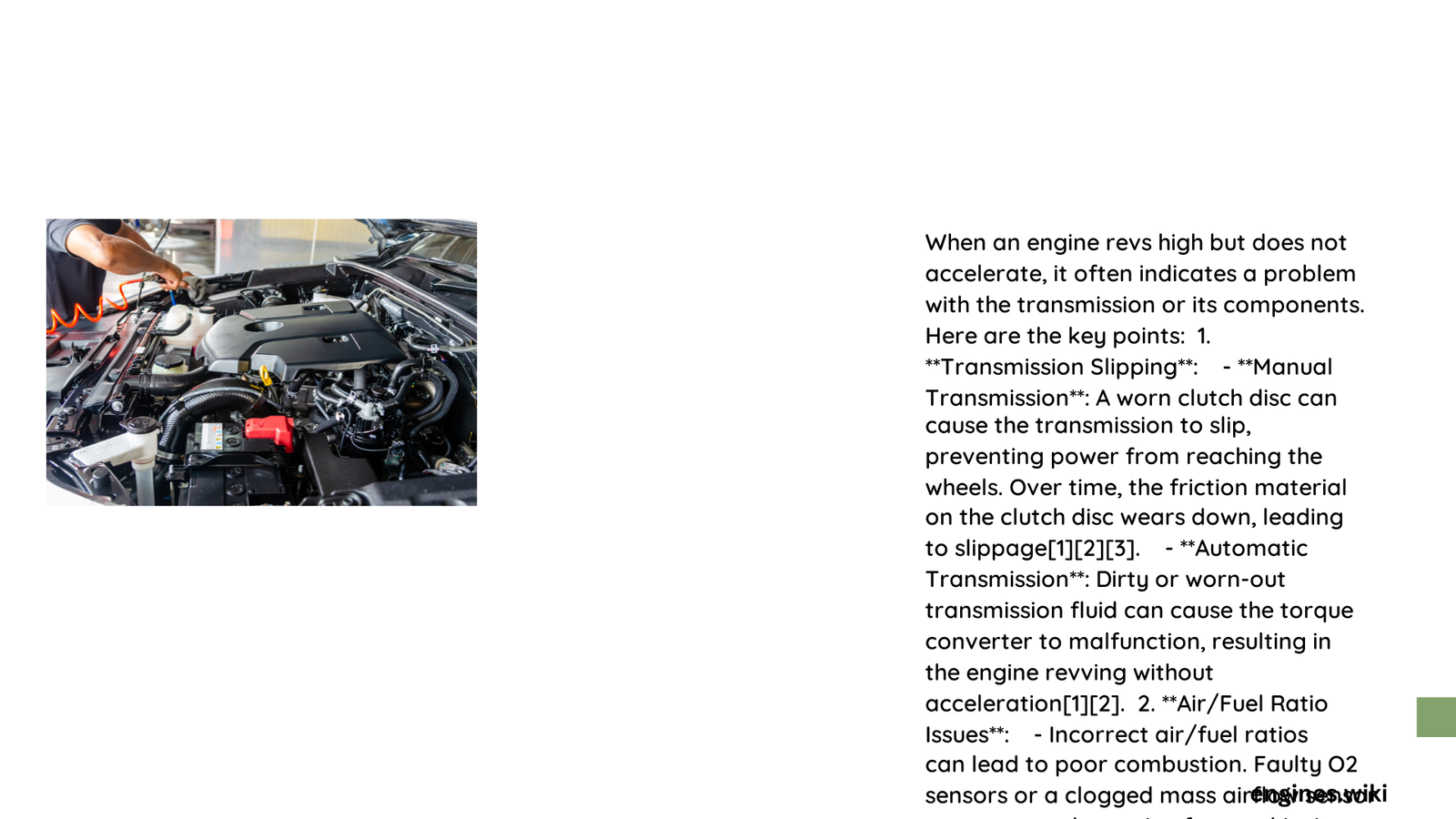Engine Revving High But Not Accelerating: A Comprehensive Troubleshooting Guide
When your vehicle’s engine revs high but fails to accelerate, it signals a critical mechanical issue that demands immediate attention. This frustrating scenario can stem from multiple complex factors, ranging from transmission malfunctions to intricate engine system problems. Understanding these underlying causes is crucial for preventing potential long-term damage and ensuring optimal vehicle performance.
What Causes Engine to Rev Without Acceleration?
Transmission Failure Indicators
- Slipping Transmission Symptoms
- Engine RPMs increase without vehicle speed
- Delayed gear engagement
- Unusual transmission fluid color or burning smell
| Transmission Issue | Potential Cause | Diagnostic Action |
|---|---|---|
| Fluid Low/Degraded | Leaks or Normal Wear | Check Fluid Levels |
| Worn Clutch Components | Friction Material Deterioration | Inspect Clutch Mechanism |
| Solenoid Malfunction | Electrical/Mechanical Failure | Perform Electrical Diagnostic Test |
Mechanical Diagnostic Procedures
- Vacuum System Inspection
- Check intake manifold for potential leaks
- Examine vacuum hoses for cracks or disconnections
-
Use specialized vacuum gauge for precise measurements
-
Throttle Body Assessment
- Clean throttle body to remove carbon buildup
- Verify electrical connections
- Test throttle position sensor functionality
Why Does Engine Rev Without Power Transfer?
Critical Component Failures
When an engine revs high but doesn’t accelerate, several critical components might be compromised:
- Clutch System Degradation
- Worn friction material
- Hydraulic system failure
-
Improper clutch adjustment
-
Fuel Delivery Problems
- Clogged fuel injectors
- Weak fuel pump performance
- Incorrect fuel pressure
How to Diagnose Performance Issues?
Professional Diagnostic Steps
- Comprehensive Scan
- Use OBD-II scanner
- Read and interpret error codes
-
Check for transmission and engine management system alerts
-
Physical Inspection
- Examine transmission fluid condition
- Inspect drive belt tension
- Check for mechanical wear in drivetrain components
What Are Potential Repair Costs?
Estimated Repair Expenses
- Minor Repairs
- Throttle body cleaning: $100-$250
-
Vacuum system repair: $150-$400
-
Major Repairs
- Transmission replacement: $1,500-$4,000
- Complete clutch system overhaul: $800-$2,500
Expert Recommendations
- Regular maintenance prevents most performance issues
- Address warning signs immediately
- Consult professional mechanics for complex diagnostics
Warning: Potential Risks of Ignoring Symptoms
Continuous operation with engine revving but no acceleration can lead to:
– Catastrophic transmission failure
– Increased repair costs
– Potential roadside breakdowns
– Reduced vehicle safety
Preventive Maintenance Tips
- Change transmission fluid at recommended intervals
- Use high-quality fuel
- Perform regular vehicle inspections
- Address warning lights promptly
Conclusion
Understanding why an engine revs high without accelerating requires systematic diagnostic approach. While some issues are minor, others demand professional intervention. Always prioritize vehicle health and safety.

